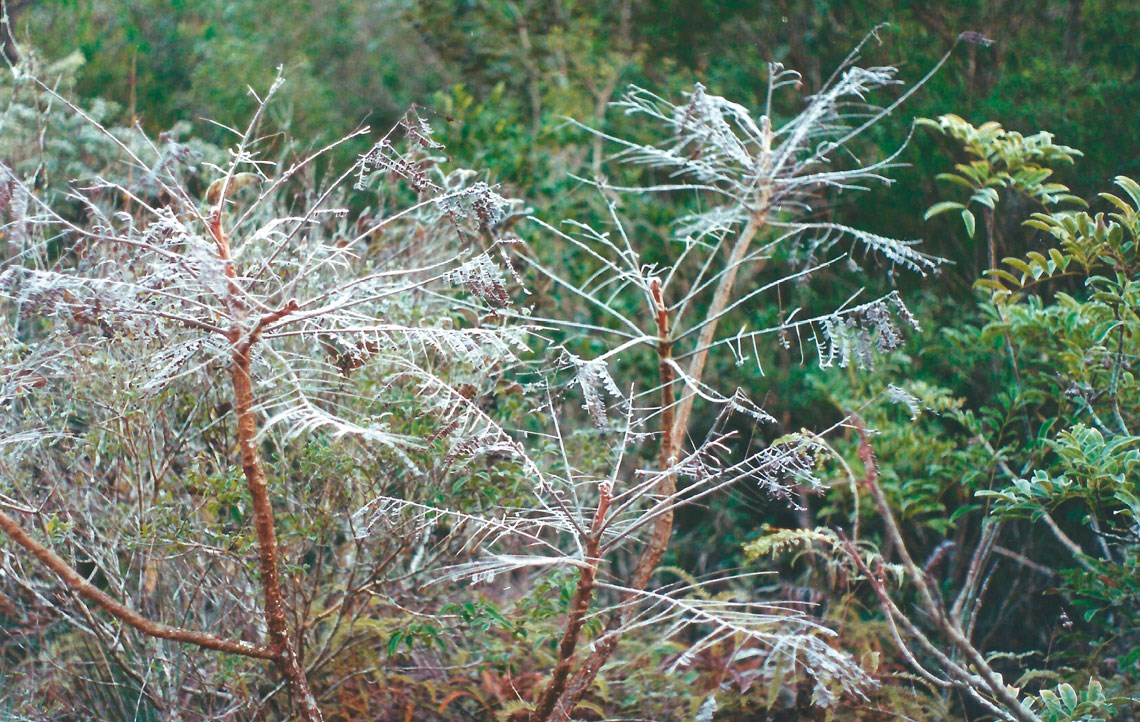The vegetation of the Brazilian Cerrado (a wooded savanna biome), well-adapted to sporadic fires, tends to struggle with intense cold. Research has shown that frost can have a similar impact to fires, reducing tree growth and influencing species selection. A study led by Giselda Durigan, a forestry engineer from the Environmental Research Institute of São Paulo (IPA-SP), suggests that these effects not only reshape the landscape, but also hinder the recovery of vegetation. During her biology PhD at the University of Campinas (UNICAMP), Natashi Pilon investigated the impact of cold on the recovery of low vegetation—shrubs and grasses—in an area of Cerrado in the state of São Paulo. Unlike fire, which consumes more organic matter (even from the ground), the cold increases the amount of leaves, branches, and twigs decomposing on the ground. The reduced area of bare land makes it difficult for seeds to disperse and germinate and harder for plants to resprout. The frost killed shrubs and grasses, especially in areas with less tree cover, reducing plant density. The cold did not reduce the number of species. Of the 305 analyzed, 73% suffered no damage (Oecologia, September 21).
RepublishEnvironment
Frosts hinder Cerrado recovery

Fava d'anta (Dimorphandra mollis) frozen by the cold
Giselda Durigan / IPA-SP
